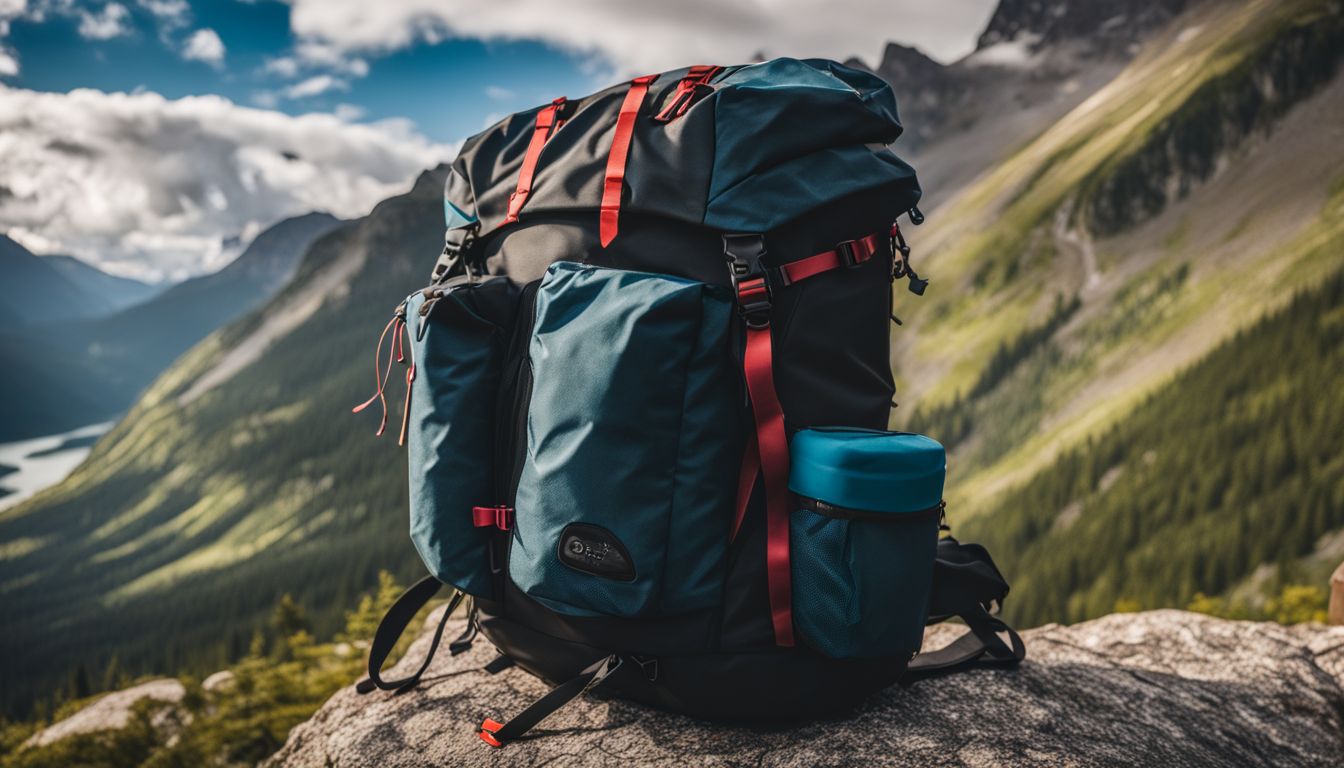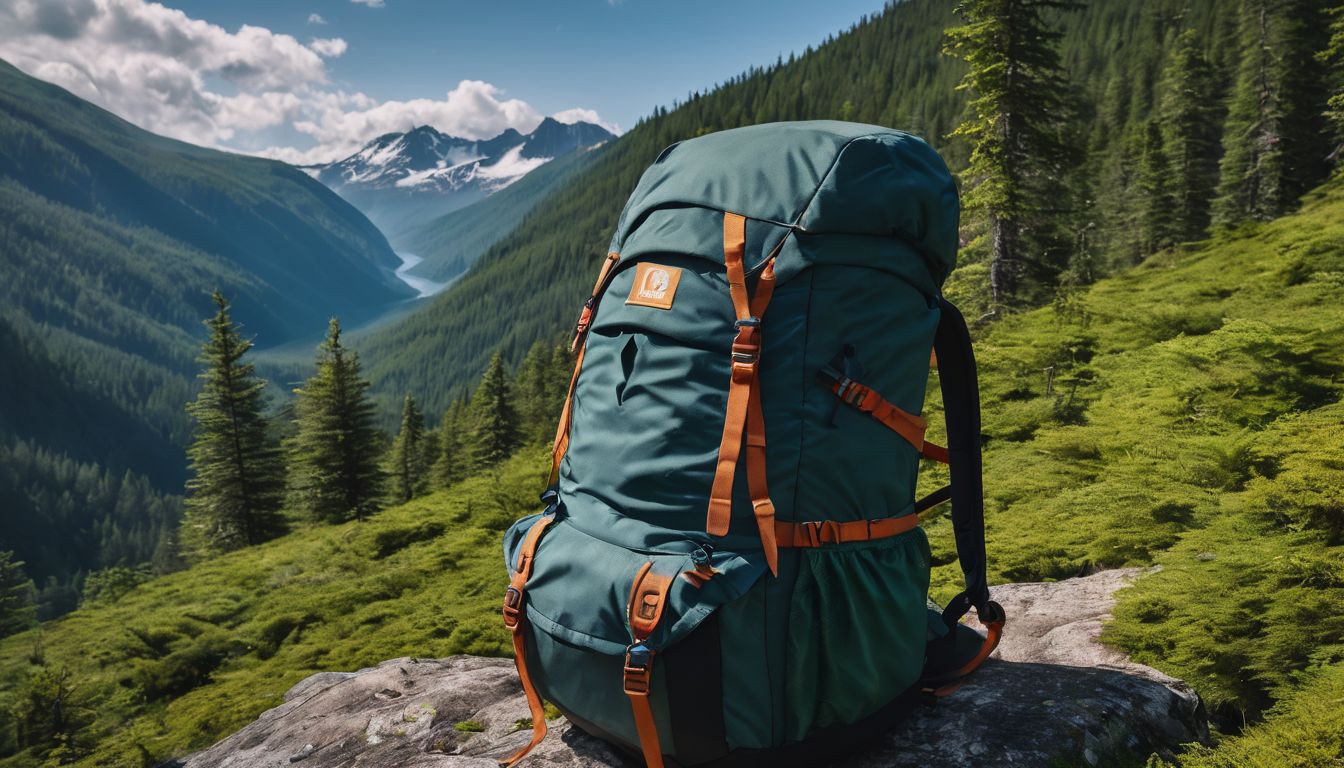Embarking on a hiking journey without mastering the art of rucksack packing is like setting sail with no compass — you might move forward, but your journey can quickly turn cumbersome.
With years of experience traversing trails and teaching outdoor survival skills, I’ve learned that a well-packed rucksack isn’t just about convenience; it’s about preserving energy and keeping morale high over miles of rugged terrain.
A hiker’s backpack is more than a sack for storing snacks and clothing; it’s their lifeline, carefully organized to provide balance, accessibility, and protection against nature’s unexpected turns.
The key lies in understanding the delicate dance between weight distribution and gear accessibility—honoring this balance transforms an ordinary hike into an extraordinary adventure.
Read on for compact wisdom that will elevate your trekking experience!
Key Takeaways
- Understand your rucksack’s design, compartments, and adjustment features to pack efficiently for hiking trips.
- Use layering and load balancing strategies to ensure easy access and comfort while carrying gear during hikes.
- Utilize organizational accessories such as packing cubes, compression sacks, and waterproofing techniques to optimize space and keep essential items organized.
Understanding Your Rucksack’s Design

To ensure efficient packing for your hiking trip, it’s essential to understand the design of your rucksack. This includes familiarizing yourself with its compartments and pockets, as well as its straps and adjustment features.
Understanding these elements will help you pack your gear in a way that maximizes comfort and accessibility on the trail.
The Backpack’s Compartments and Pockets
Your rucksack has many pockets and areas to store your stuff for a hike. Think of them like rooms in a house, each one has its own use. The big part in the middle is where you’ll put most things, like your tent and sleeping bag.
This main area usually closes with a drawstring and has a flap over it to keep everything safe.
Pockets on the outside are great for items you need fast, like trail snacks or your water filter. Many rucksacks have side pockets where water bottles can go, making it easy to drink without stopping.
There’s often a special spot at the bottom just for sleeping bags too.
Rucksacks also come with small straps on the sides called compression straps. Use these to make your pack smaller and easier to carry by squeezing it tighter together once all your gear is inside.
Hip belt pockets are handy for little things you might need quickly—like a map or some lip balm—without having to take off your pack.
Straps and Adjustment Features
Once you know where everything goes in your rucksack’s compartments, getting the fit right is just as key. Straps and their adjustments play a huge role here. They help you carry your load comfortably during long treks.
A good rucksack has many straps that you can tighten or loosen to make it fit better.
Before you put on your rucksack, make sure all the straps are loose. After it’s on, tighten the hip belt first to get the weight sitting right on your hips. This takes some pressure off your shoulders.
Next, adjust the shoulder straps so they’re snug but not pulling down hard on you.
Your pack should also have a chest strap and maybe even more ways to change how it fits like Deuter’s Vari Slide System. These features let you move around easily with a full pack because they keep the weight steady near your center of gravity.
So use these adjustments every time before you start walking with your pack. It will feel much better and help stop back pain or blisters from a poor fit.
Essentials of Efficient Packing

Layering your gear strategically in your rucksack will make it easier to access items when needed. Balancing the load within your pack is also essential for ensuring comfort and stability while hiking.
Layering Strategy for Easy Access
Pack smart with a layering strategy! Start by putting your core essentials, like the sleeping bag and camp clothes, at the bottom of your rucksack. This tactic keeps them out of the way until you set up camp.
Then move on to medium-weight items. Pack these around your spine for better balance. Think about things you’ll need during the day – like snacks or a rain jacket – and make sure they are on top or in specialty pockets for quick grabbing.
Keep heavy gear close to your back’s center; this helps distribute weight onto your hips more comfortably. Use those handy side pockets for water bottles or trekking poles that you might reach for often.
Remember, efficient packing means easier hiking, so take time to think about where each piece goes in your pack!
Balancing the Load for Comfort
To balance the load for comfort, place heavier items closer to your back. This maintains your center of gravity and reduces strain on your body while hiking. Organize gear in an internal frame backpack based on weight: from light to heavy to medium.
By doing so, you maximize comfort and minimize the risk of discomfort during multi-day hiking trips.
One important tip is packing dense gear close to your back helps maintain comfort while hiking. Another crucial fact is organizing items by weight helps distribute the load evenly, reducing strain on your body during long hikes.
These strategies ensure a comfortable and enjoyable experience while carrying all necessary gear for a successful hike.
Organizational Accessories for Rucksacks
Packing cubes are essential for keeping your hiking backpack organized. They help separate and categorize different items, making it easier to find what you need without rummaging through the entire pack.
Nylon straps also come in handy for securing gear inside the backpack, preventing them from shifting during your hike.
Compression sacks can be a game-changer when it comes to optimizing space in your rucksack. These sacks allow you to condense bulky items like sleeping bags or clothing, freeing up valuable space for other essentials.
Additionally, utilizing small stuff sacks can keep smaller items organized and easily accessible as well.
Now let’s delve into packing efficiently for different weather conditions.
Packing for Different Weather Conditions
Water is a hiker’s worst enemy, so it’s important to be prepared for different weather conditions. Whether it’s waterproofing your gear or having rain covers and sacks ready, being equipped for unexpected changes in the forecast can make all the difference in a successful hiking trip.
Waterproofing Your Gear
To keep your gear dry during hiking trips, it’s crucial to use waterproofing techniques. Use a backpack cover or liner to shield your belongings from rain and moisture. Invest in waterproof stuff sacks or dry bags for extra protection against wet conditions.
Be prepared with adequate rain gear, including a reliable raincoat, pants, and gaiters to stay warm and comfortable even in the rain.
Don’t forget to waterproof your boots; ensure they are suitable for wet weather conditions. By taking these steps, you can hike confidently knowing that your essential gear will remain dry and functional regardless of the weather.
Preparing for Rain with Covers and Sacks
When hiking in wet conditions, preparing for rain with covers and sacks is essential. Here’s how to do it effectively:
- Utilize a rain cover specifically designed for your backpack to provide the first layer of protection against rain.
- Use dry bags in various sizes to keep essential items organized and dry within your backpack, including a specific food bag.
- Consider using stuff sacks with roll tops to further protect gear from moisture and maintain organization.
- Ensure that important items such as phones are kept in waterproof cases and within the protection of dry bags to prevent water damage during a rainy hike.
- Employ trash compactor bags inside your pack as an additional measure to keep the contents dry during prolonged exposure to rain or wet conditions.
- Emphasize proper waterproofing for your sleeping bag compartment and other critical gear to avoid discomfort due to dampness during rainy weather.
Tips for Packing Convenience
Utilize compression sacks to maximize space and keep your gear organized. Organize your gear in a way that allows for quick retrieval when needed on the trail.
Utilizing Compression Sacks
Compression sacks are a must-have for hikers looking to maximize space in their backpacks. These nifty accessories allow you to compact your clothes and gear, making more room for other essentials.
By using compression sacks, hikers can reduce the volume of bulky items like sleeping bags, freeing up valuable space in the pack. They come in various sizes, perfect for organizing different items like clothes and sleeping bags, helping keep your gear neat and accessible during your hiking trip.
Using compression sacks is an efficient way to make the most out of your backpack’s space while keeping everything well-organized. They work by tightly pulling the straps to expel excess air from packed items, effectively reducing their volume.
Organizing Gear for Quick Retrieval
When organizing your gear for quick retrieval, consider using color-coded stuff sacks or packing cubes to easily identify and access different categories of items, such as clothing, cooking equipment, or first aid supplies.
Utilize the backpack’s compartments and pockets strategically by designating specific areas for frequently needed items like snacks, maps, or a hydration reservoir. Additionally, placing heavier items closer to your back within the main compartment helps maintain balance while also making them easier to find and retrieve when needed.
Efficiently organizing your gear not only saves time but also reduces frustration on the trail. Prioritize easy access to essentials like a first aid kit or navigation tools in case of emergencies.
Consider using carabiner clips to attach small accessories like a headlamp or multi-tool to the outside of your pack for quick reach without having to rummage through multiple pockets.
Conclusion
In conclusion, efficient packing is essential for a successful hiking trip. By understanding your rucksack’s design and utilizing organizational accessories, you can optimize gear organization.
Packing for different weather conditions and prioritizing convenience through tips such as using compression sacks are practical strategies to adopt. When applied, these methods can significantly improve the comfort and ease of your hiking experience.
Remember, proper packing not only lightens physical stress but also enhances overall enjoyment on the trail.
For a detailed guide on the best organizational accessories to complement your rucksack packing, check out our comprehensive list here.
FAQs
1. What should I pack in my rucksack for a hiking trip?
Pack your gear in an organized way with the heaviest items close to your back. Include essentials like a sleeping pad, water, snacks, and clothing layers.
2. Can I use a daypack for short hiking trips?
Yes! A daypack is perfect for short hikes. It’s smaller than a rucksack but still holds what you need for one day out on the trail.
3. What’s the difference between a rucksack and a bum bag?
A rucksack is bigger and carries all your gear on your back while hiking. A bum bag is much smaller, worn around your waist, and great for easy access to small items.
4. Where can I find good quality backpacks for thru-hikes?
You can find high-quality backpacks suitable for long hikes at outdoor stores like REI Co-op or other shops that specialize in outdoor gear.

